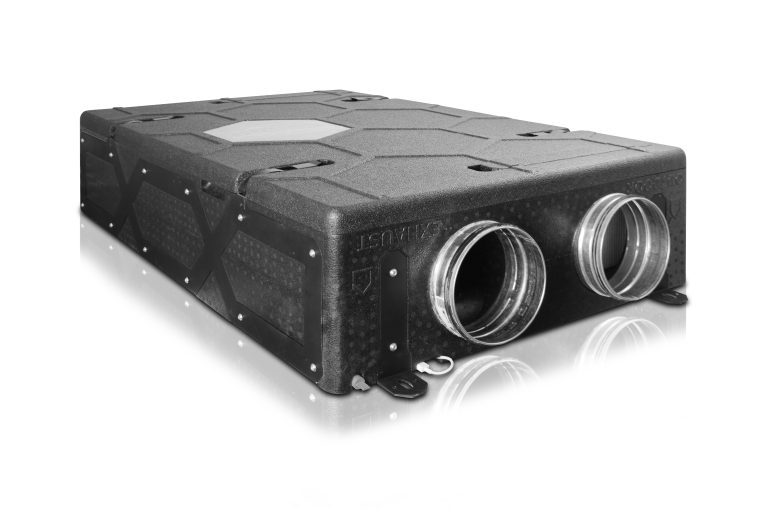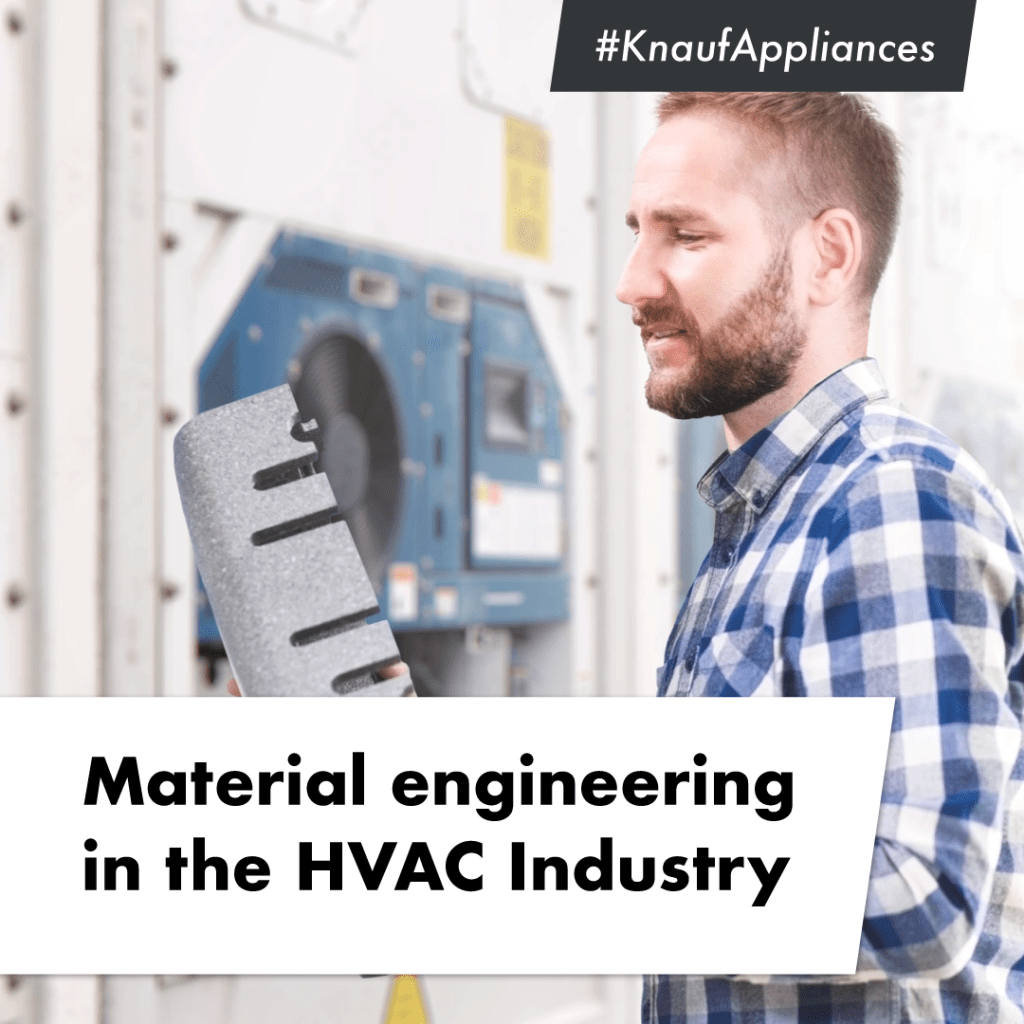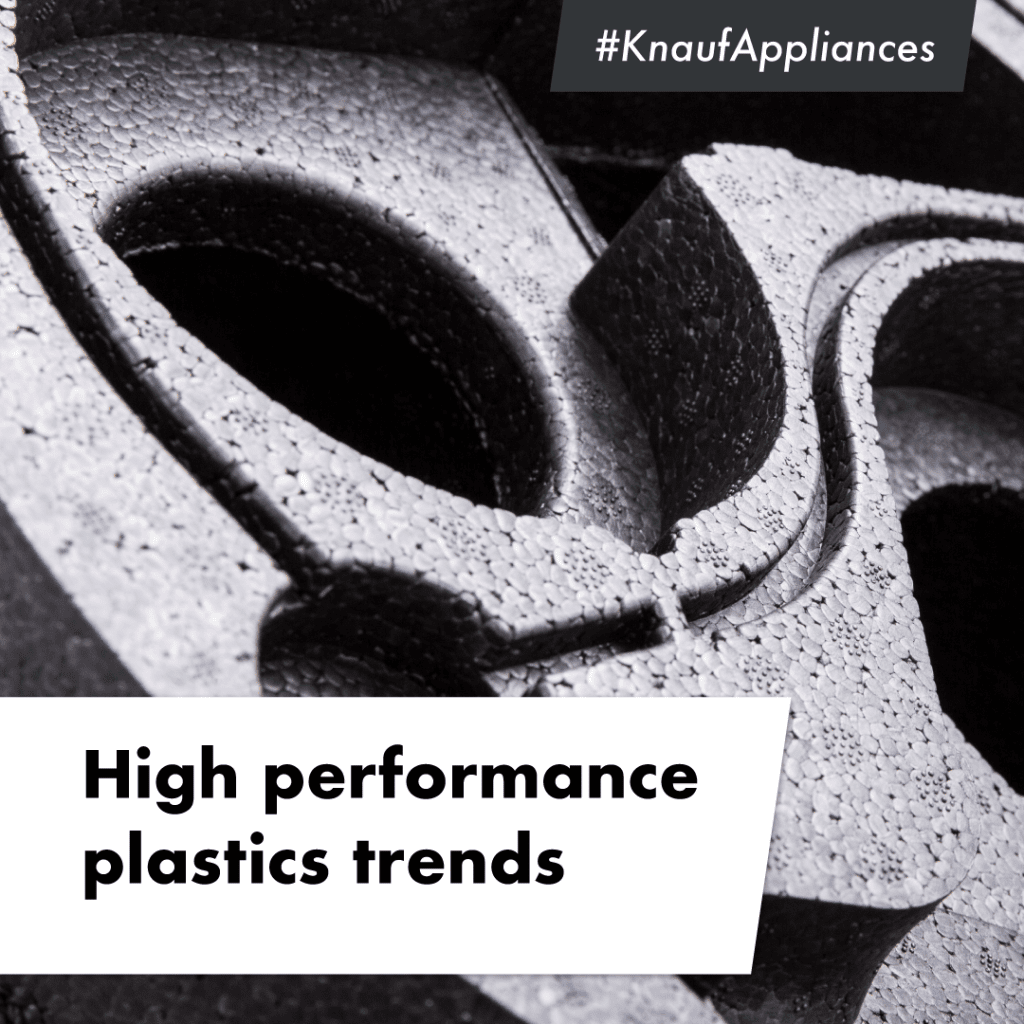Consume less, heat more. This is the purpose of heat recovery units, which are essential to maintain comfort inside buildings when ventilation equipment is used. But also to meet the energy efficiency and greenhouse gas emission reduction targets set by the Paris Agreement.
Introduction to heat recovery
Air-conditioned buildings allow us to maintain a comfortable indoor temperature 365 days a year. It doesn’t matter if it’s snowing, raining or there’s a heat wave outside. But buildings are not airtight. In addition to heating or cooling, it is necessary to ventilate to avoid a stuffy atmosphere that can become unbreathable and even toxic for the users.
And, although not as important from a respiratory health perspective, replacing stale indoor air with fresh outdoor air also eliminates odours and prevents condensation dampness.
These air circuits can operate 24 hours a day without the users hardly being aware of it at all. This is where the dilemma arises: a system is needed to ensure that cold air entering from outside does not reduce the comfortable temperature inside. At the same time, it prevents air that has cost many kilowatts to heat from simply escaping, wasting thousands of euros in energy.
This is the function of heat recovery systems

A heat recovery unit or ventilation system with heat recovery technology is an HVAC (Heating, Ventilation and Air Conditioning) unit capable of ventilating, air-conditioning and, at the same time, using up to 90% of the heat energy of the stale indoor air.
This air conditioning system recovers up to 60% of the heat (which would be lost in a conventional mechanical ventilation system) and reduces the energy consumption of HVAC systems by approximately 40%. For this purpose, it has separate ducts so that the exhaust and intake air do not mix.
This equipment with energy recovery systems complies with Directive (EU) 2018/844 and the future Energy Performance of Buildings Directive regarding the thermal insulation of ventilation systems and the need for heat recovery ‘from ventilation and cooling’.
They also count positively in the calculation of the energy efficiency of buildings.
The requirement for heat recovery in ventilation equipment was expressed by the WHO as early as 2009 in the document WHO guidelines for indoor air quality: dampness and mould. The same report recognises that more efficient buildings offer better air quality, higher levels of comfort and better health for their occupants.
Industrial heat recovery systems
Do you remember Albert Einstein’s “energy is neither created nor destroyed, it is only transformed”? This phrase revolutionised 20th century physics and is still relevant today. Whether it is used equally in all its forms is another matter.
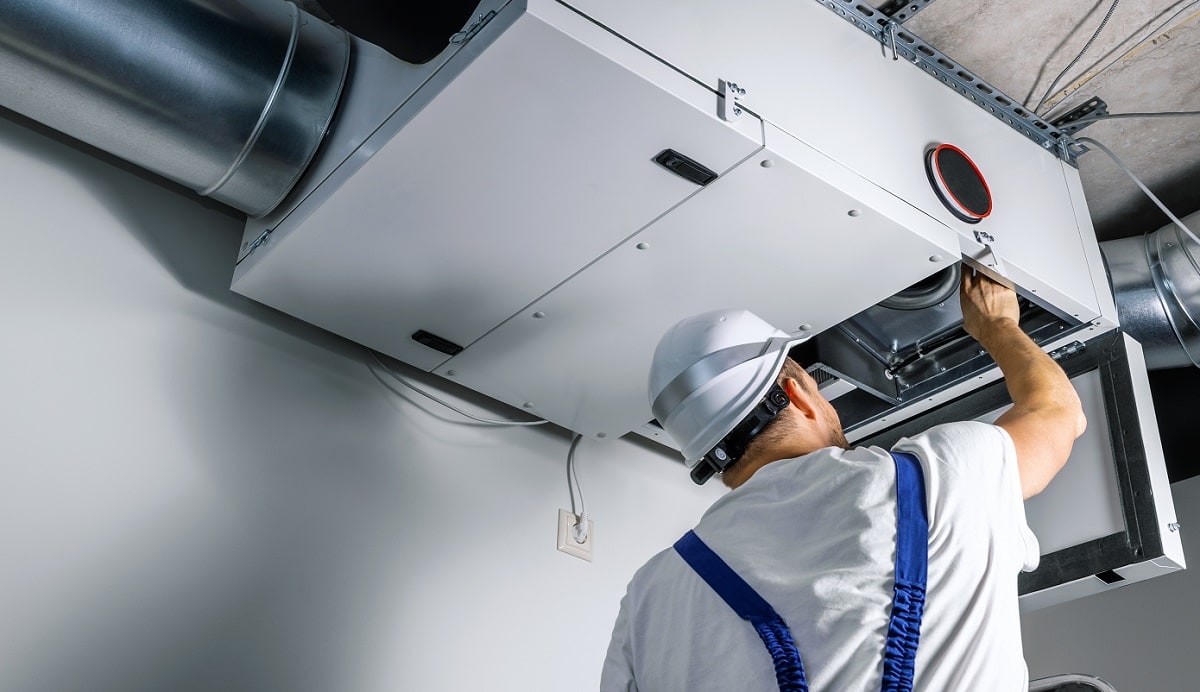
Paradoxically, large industrial consumers of energy, such as metallurgy and iron and steel, also generate energy in the course of their processes. Specifically, thermal energy. However, this energy is wasted and ends up in the environment in the form of exhaust gases or other fluids.
This is known as waste heat. This residual energy accounts for 20-50% of the energy lost in industry.
To return to Einstein’s famous phrase, waste heat energy is perfectly valid energy. Recovering it reduces energy costs for industry and also reduces energy-related greenhouse gas emissions.
All that is needed are the mechanisms to retrieve and reuse it. This is the purpose of waste heat recovery systems: equipment designed for the recovery of surplus industrial heat and its transformation into energy that can be used in other production processes in the industry itself or in other nearby users.
In other words, this heat energy can be used to reheat the raw materials in the same factory where it was generated, or used to supply hot water and heating to nearby homes.
This system is increasingly present in European municipalities by linking urban biomass incineration centres to nearby household heating. This is how heating networks, also known as district heating, work.
It goes without saying that having heat recovery systems in industrial processes is a giant step towards energy circularity and achieving the goal of a decarbonised Europe.
Insulation with EPP: benefits in heat recovery systems
The two major challenges for these units are to efficiently extract the maximum amount of heat energy from the air and to optimally conserve it. This efficiency in heat recovery requires insulating materials with the highest performance.
Expanded polypropylene or EPP has outstanding properties for this function. Its closed-cell expanded foam structure with 98% air inside gives it a high thermal insulating capacity.
But this material also has many other physical properties that make it the best option for optimising the energy efficiency of HVAC equipment. And, in particular, the energy savings of heat recovery units.
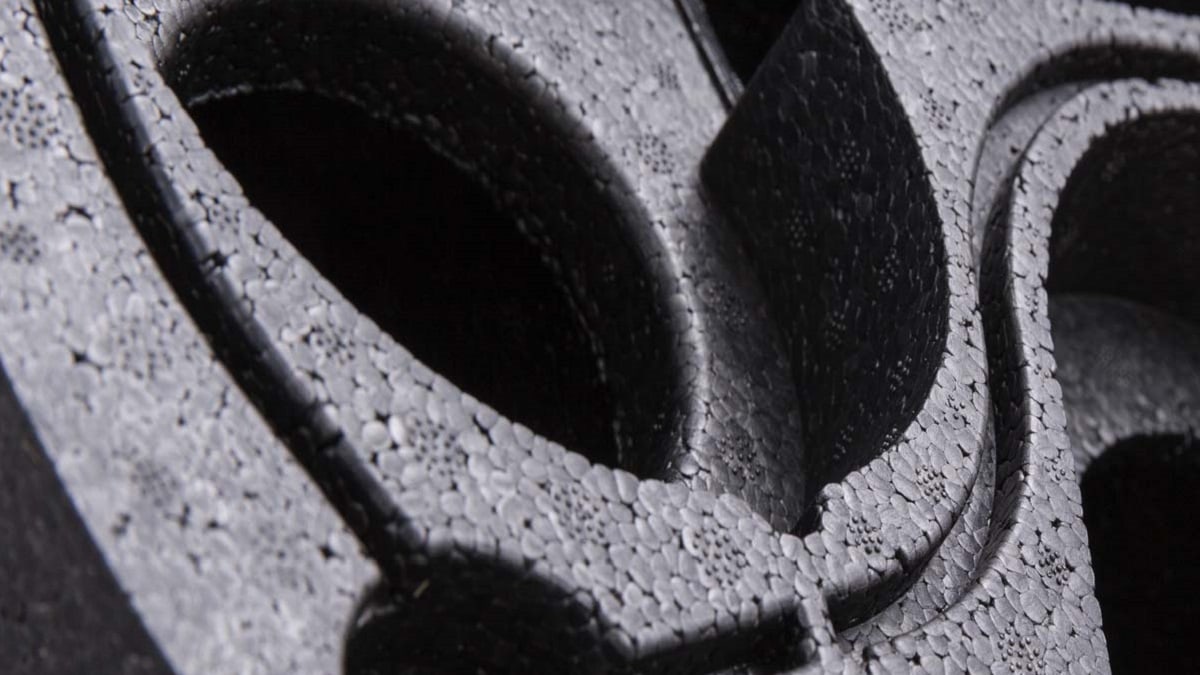
Incorporating EPP insulation parts in a heat recovery unit can provide the following benefits:
Thermal insulation
Being primarily air, EPP is a natural insulator. Incorporating EPP insulation parts in heat recovery units contributes significantly to minimising energy and heat losses.
From this quality, three derivative benefits can be deduced for its users:
- increased heat recovery
- greater controllability of comfort
- energy bill reduction
Mechanical resistance
Despite its foam structure and elasticity, the material is extremely resistant to friction, vibration and impact. It is not for nothing that it is known as the ‘steel of the plastics industry‘.
Chemical and water repellent resistance
Condensation can become your biggest enemy in equipment that conducts fluids with changing temperatures. This constant humidity can eventually rust nearby metal parts. Worse still, they can be a source of mould, with the consequent risk to the health of people and pets.
PPE is also highly resistant to chemical products
These properties ensure that these technical parts will be durable and perform uninterruptedly over the long term. This ensures proper energy management for years to come and reduces maintenance costs.
Customisation of parts
EPP is an easy-to-mould foam. This gives designers the freedom to design and manufacture parts to suit the needs, sizes and formats required for each specific device. In fact, the development of customised EPP parts represents a key strategy to increase the efficiency of a heat recovery unit.
As we have already seen, it is an elastic and resistant material, qualities that contribute to improve the functionality and efficiency of the parts.
Lightness
With 98% air inside, the EPP parts are lightweight. This makes it possible to manufacture wall-mounted units that add hardly any weight to the building structure. They are also easier to handle, move and install.
Acoustic insulation
Although not their primary function, EPP parts absorb vibrations and help to reduce the annoying engine hum often associated with air recuperators and HVAC systems in general.
Recyclable
The new European guidelines leave no room for doubt: construction materials or materials used in buildings should, as far as possible, be recyclable at the end of their life cycle. Technical PPE parts are recyclable.
A quick glance at these properties of EPP is enough to conclude that this is a very valuable material for the HVAC sector, also known as HVACR, an acronym for Heat Ventilation Air Conditioning and Refrigeration.
Examples of successful uses of heat recovery optimisation using EPP insulation
Heat recovery units consist of an exhaust fan (which draws in the stale air) and a supply fan (which exhausts the stale air to the outside) in each of the ducts, i.e. inlet and outlet. At the heart of the system is the heat exchanger, a device that ‘captures’ heat energy from the air to be expelled and transfers it to the incoming air.
This crossover in the exchanger occurs without the two air flows connecting with each other.
In order to optimise the heat exchanger, these units use EPP insulating parts to keep the two flows separate so that there is no uncontrolled heat leakage.
Depending on the needs and characteristics of the building use, heat recovery units with EPP insulation can be thermal, enthalpic or decentralised. They are used, respectively, in hospitals, bars or homes.

Recuperator heat recovery units
These only capture heat and not moisture, as water vapour can carry pathogenic micro-organisms. They are used in hospitals where extreme safety measures must be taken due to the vulnerability of patients.
Enthalpic heat recovery units
These recover heat and moisture. They are used in spaces where there is condensation of humidity due to the perspiration of living beings or where cooking equipment is used: bars, meeting rooms, offices…
Decentralised recuperators
These are installed in dwellings after renovation. They improve indoor health and comfort, and make the home more energy efficient.
Energy savings and return on investment through EPP insulation in heat recovery systems
European industry consumes about 25% of total primary energy and generates 20% of greenhouse gas (GHG) emissions. And, as we have seen, it can waste up to 50% of that energy.
Efficient heat recovery systems mean a reduction in external energy inputs. Considering the unstoppable rise in electricity and fossil fuel prices, recovering a percentage of the energy purchased represents a significant saving for industry.
The war in Ukraine has opened our eyes to another worrying reality: energy dependence on third countries can jeopardise the normal functioning of industry. Having circular energy systems within industrial plants safeguards at least part of the production in case of power outages.
![]()
Knauf Appliances solutions for heat recovery units
At Knauf Appliances we have decades of experience in manufacturing technical parts with plastic foams. Our commitment to the environment has also led us to investigate technical solutions that reduce the environmental impact of HVAC equipment and improve the energy efficiency of the equipment.
Do you want more information on how to improve energy efficiency in HVAC systems with EPP parts? Download our free guide Technical manual on expanded foam in Industry and discover all the benefits of this material.
